
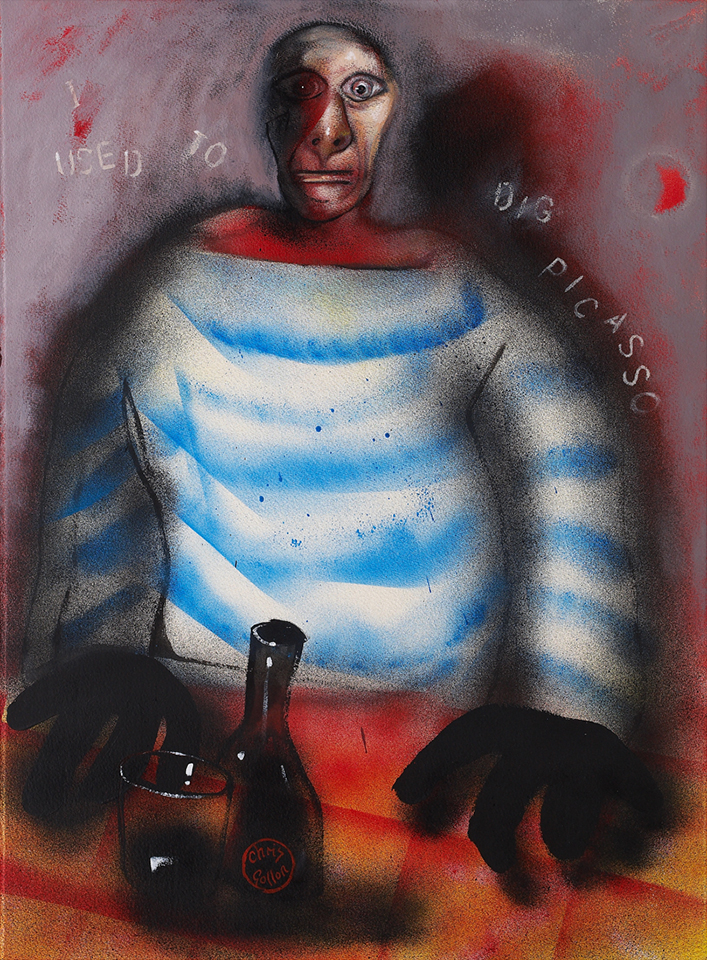
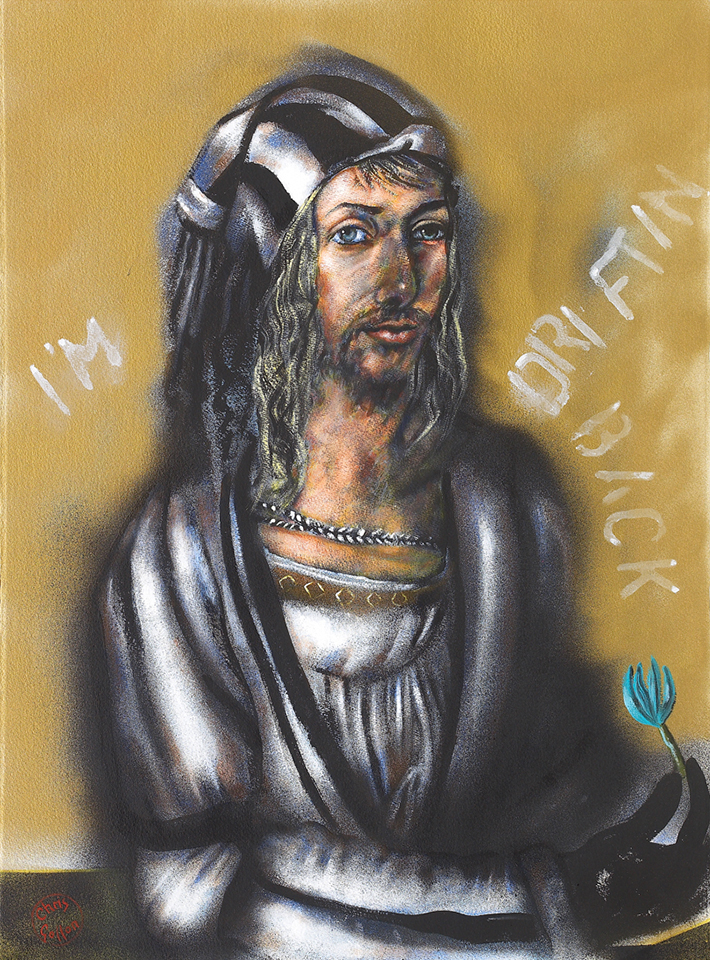
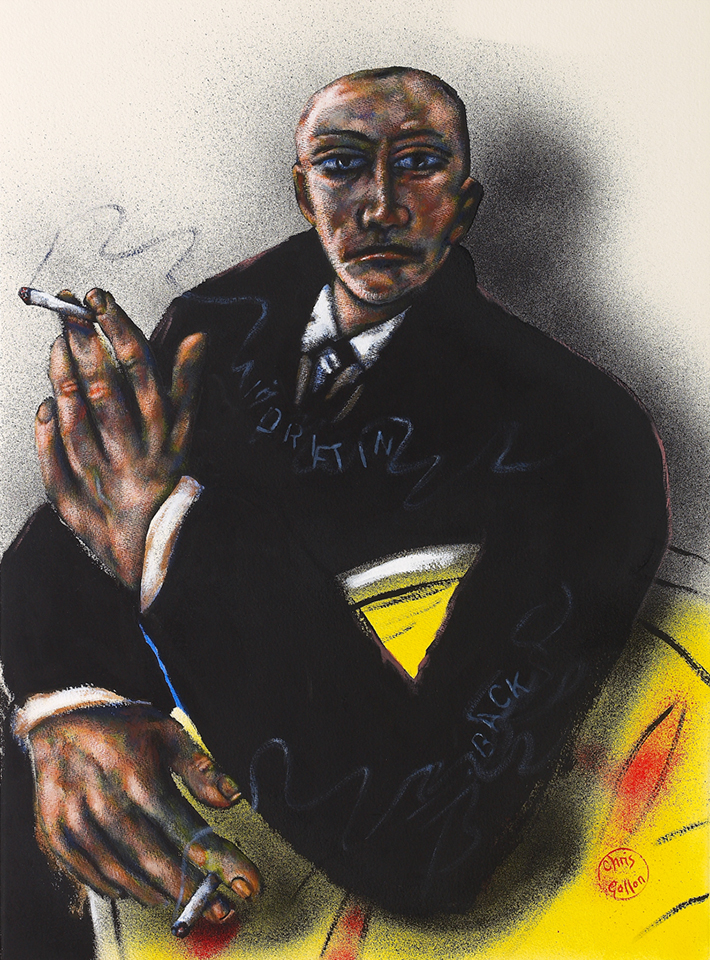
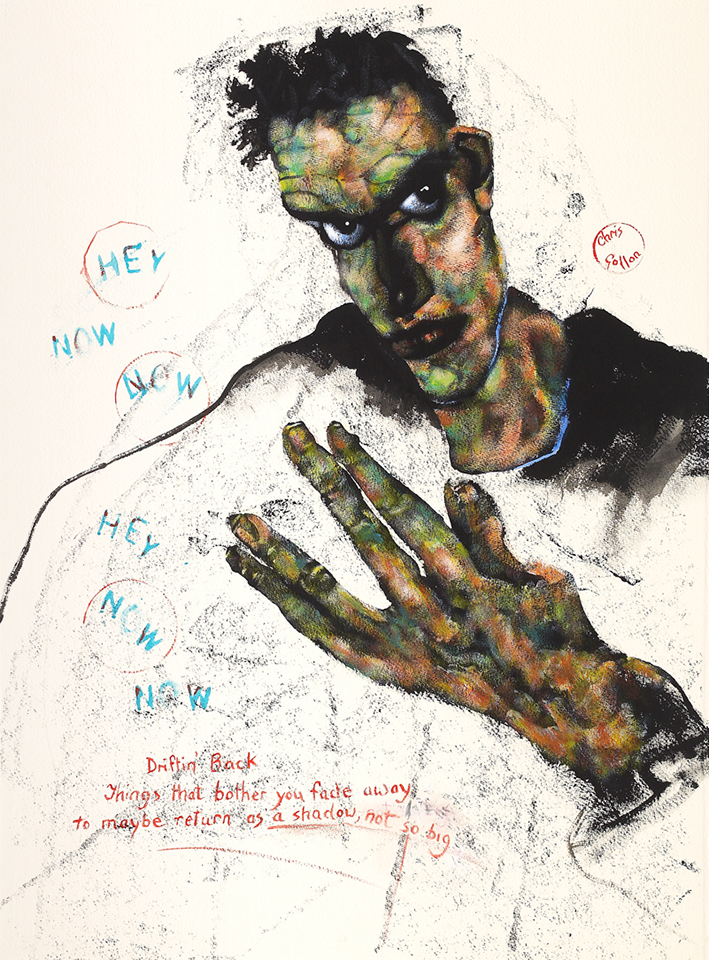
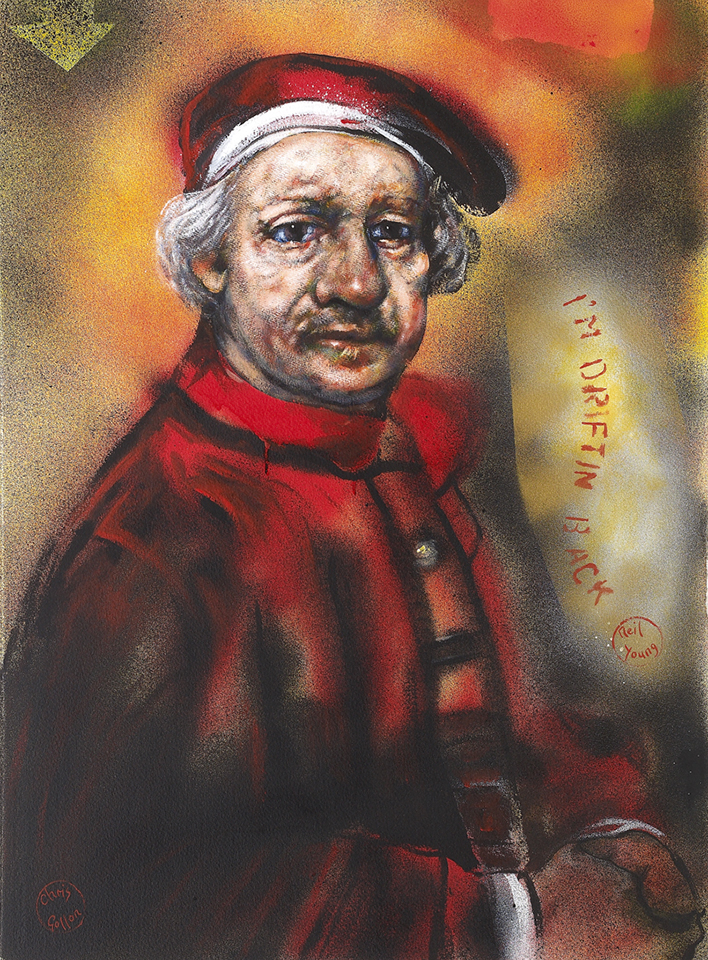
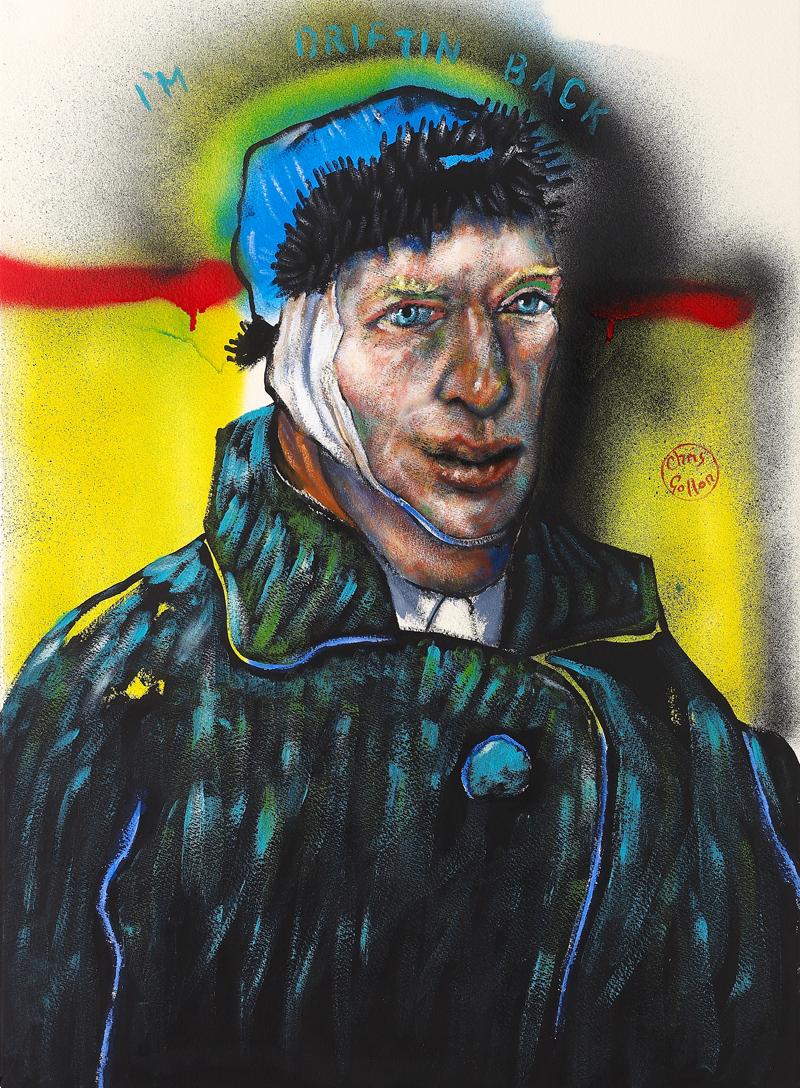
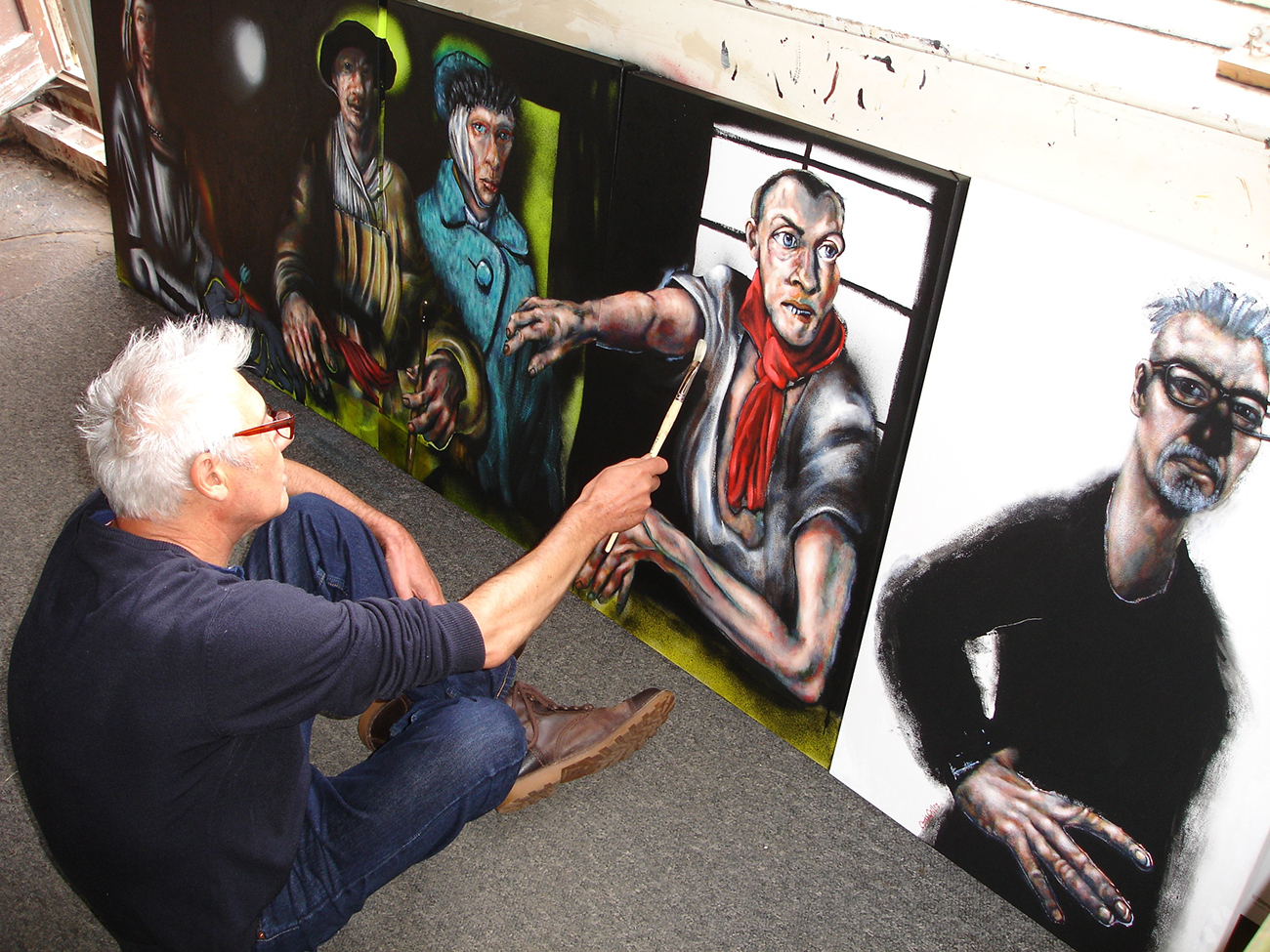
Driftin’ Back’ (after Neil Young)’ is a 10ft (3m) long painting in five panels, in which Chris Gollon continued his interest in the predella* format. It is partially inspired by three things: 1) the recent Neil Young song of the same title (on his Psychedelic Pill album, 2012); 2) the famous dinner at Paris’s Hotel Majestic in 1922 — the only time Proust, Picasso, Joyce and Stravinsky were at table together (with very mixed results); and 3) Gollon’s own fascination with the history of self-portraiture from Dürer to today. Instead of contemporaries being at a dinner table, Gollon has given us the impossible: in one dining room, the gathering of some of the greatest self-portraitists of the last five centuries. Gollon made studies on paper for this extraordinary new work, including Gollonesque paintings of self-portraits by Picasso, Schiele, Beckmann and other of the artist’s favourite painters, all now sold into private collections. In the final work, he avoided putting in Picasso and Schiele, since they were actually contemporaries of Beckmann. In the end, the guests are Dürer—the first to paint a pure self-portrait—then Rembrandt, Van Gogh, and Beckmann. Chris Gollon placed himself at the end in order that he listen to the conversations. Alas, as with the disastrous dinner at Hotel Majestic and the huge egos present, conversations in ‘Driftin’ Back seem equally thin.
“Unlike the studies I made for this work, this predella ‘Driftin’ Back’ is completely different, since it is not pastiche. It is up to the viewer to agree, disagree, or go somewhere else with it, or reject it as unimportant twaddle. It could just be a trip down Memory Lane, but involving memories we don’t have.” Chris Gollon
*predella (prĕdĕl´lä), Italian term for a painted panel, usually small, belonging to a series of panels at the bottom of an altarpiece and was used mainly in Italy from the 13th to the16th century. Predella panels generally consist of narrative scenes against a continuous background. It gave the artist an opportunity to express himself with more inventiveness and vivacity in these episodes than in the main altar panel, where the image was conventionalized to a greater extent.
(Image of Chris Gollon in his studio © David Tregunna)